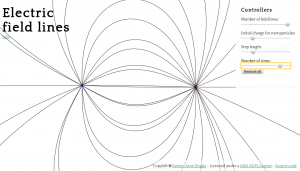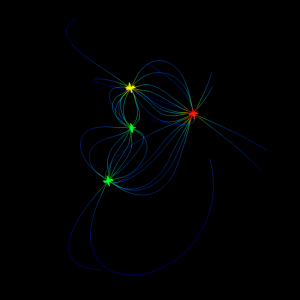We have made a small demo that will allow you to play around with electric field lines in your web browser. You can place and move around charged particles to see how the field changes as you make your own charge configuration.
Note that there are some limitations to this simulation, leaving it a bit unphysical when it comes to lines that might end up in open space, wrong field line density and other quirks. All in all it should be correct to a decent approximation, though.
For the programming enthusiasts out there, the simulation is created using Javascript and HTML5. You can check out the source code here.
Enjoy!




